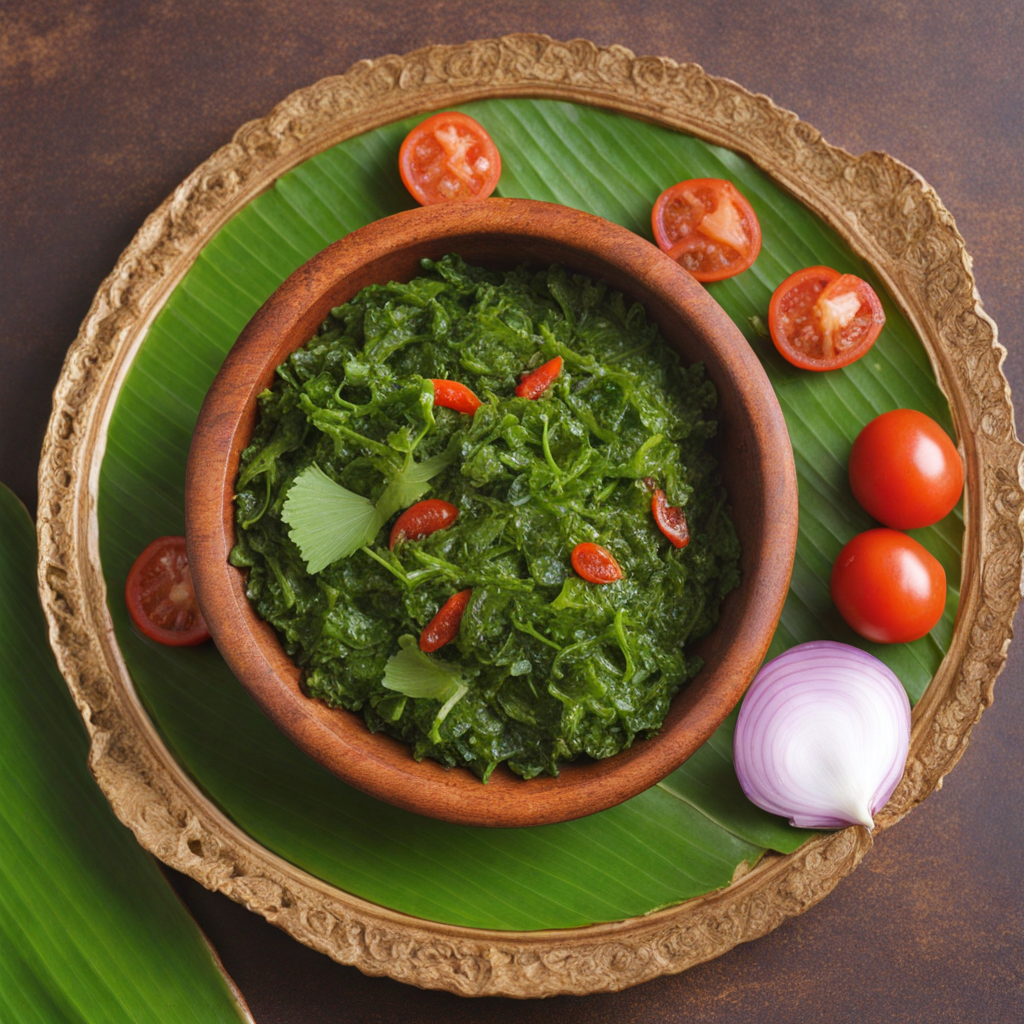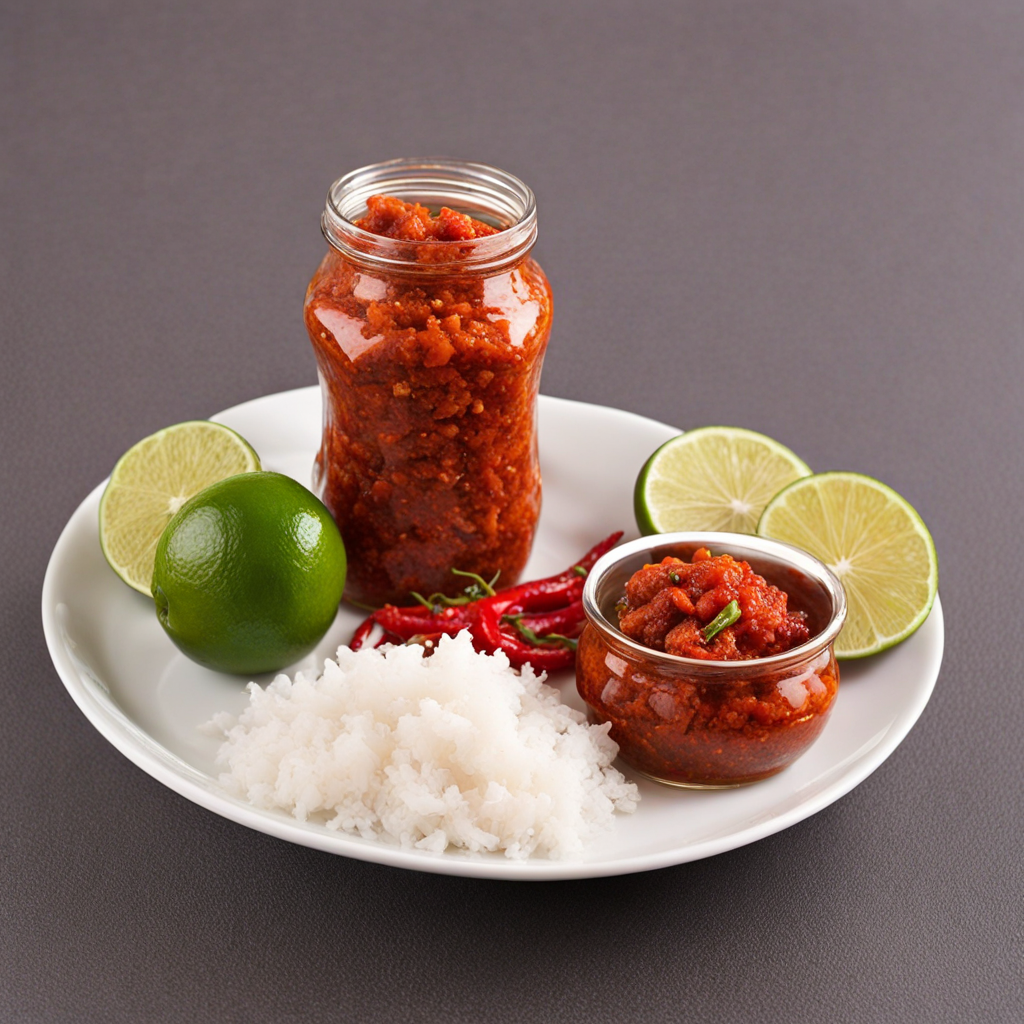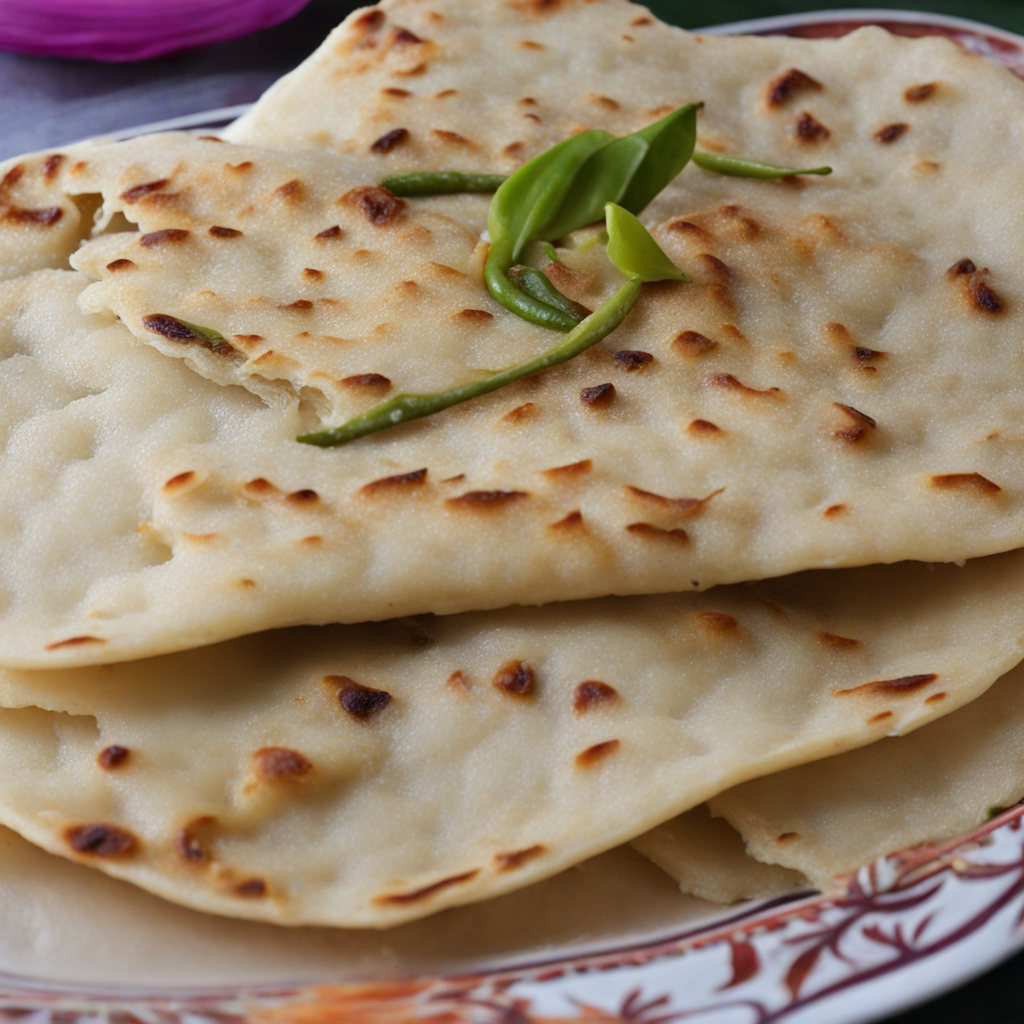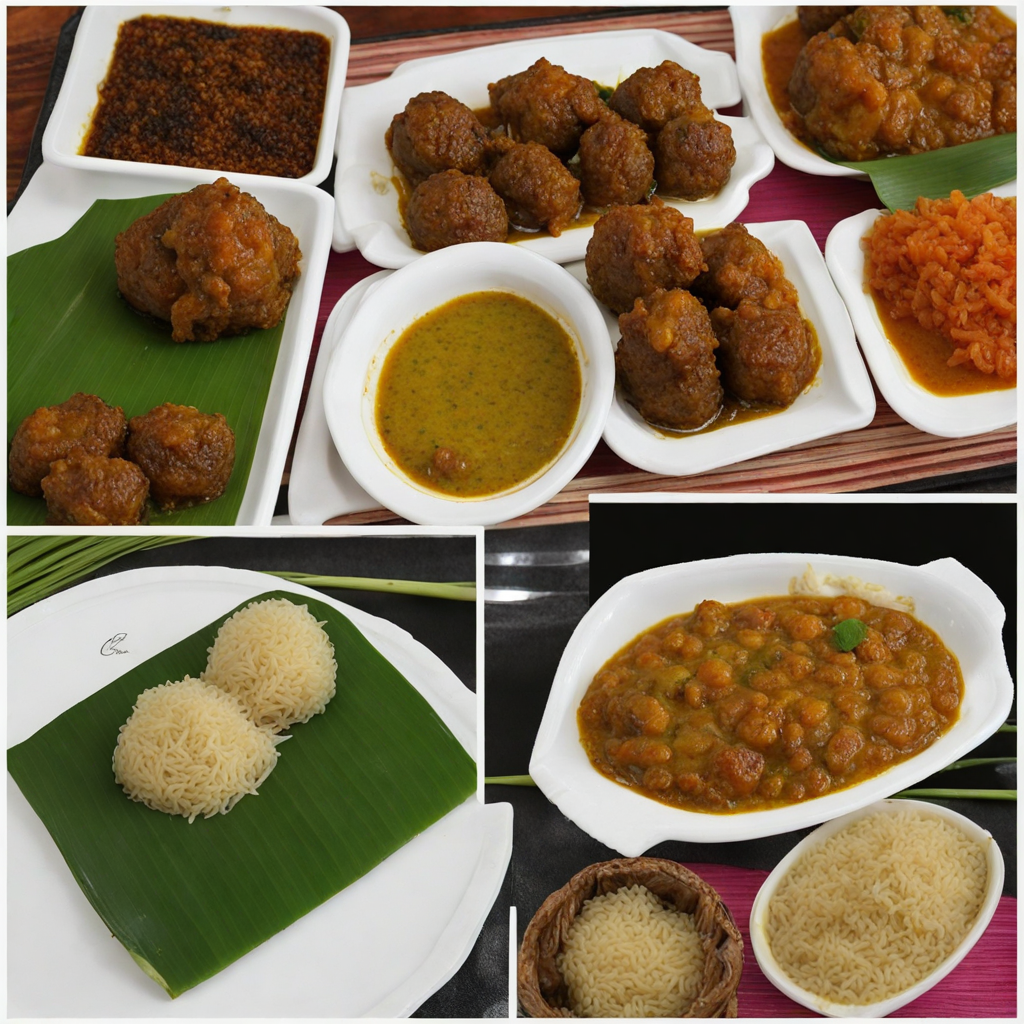Gotu Kola Sambol
Gotu Kola Sambol is a vibrant and refreshing Sri Lankan salad that showcases the unique flavors of gotu kola, a leafy green herb known for its health benefits and distinctive taste. This sambol is prepared by finely chopping fresh gotu kola leaves and mixing them with grated coconut, which adds a creamy texture and a hint of sweetness. The dish is often accented with a squeeze of fresh lime juice, enhancing its freshness and balancing the earthy notes of the greens. The combination of these ingredients creates a harmonious blend that is both invigorating and satisfying, making it a perfect accompaniment to rice or flatbreads. To elevate the flavor profile, traditional recipes often include a medley of spices such as red chili flakes, which add a subtle heat, and salt to enhance the overall taste. Some variations might incorporate onions or green chilies for an extra crunch and a hint of sharpness. The result is a sambol that is not only delicious but also packed with nutrients, making it a popular choice among health-conscious eaters in Sri Lanka and beyond. The bright green color of the gotu kola, complemented by the white coconut and vibrant spices, makes for an eye-catching dish that promises a delightful culinary experience. Gotu Kola Sambol embodies the essence of Sri Lankan cuisine, which is characterized by its use of fresh, local ingredients and bold flavors. This sambol is often served as part of a larger meal, providing a refreshing contrast to richer dishes such as curries or grilled meats. Whether enjoyed as a side dish or a light meal on its own, Gotu Kola Sambol invites you to explore the lush tastes of Sri Lanka, offering a unique experience that is both invigorating and deeply rooted in the island's culinary traditions.
How It Became This Dish
The Rich History of Gotu Kola Sambola: A Culinary Gem from Sri Lanka Introduction Gotu Kola Sambola, a vibrant and flavorful salad from Sri Lanka, embodies the island's rich culinary heritage and its deep-rooted connection to nature. Made primarily from Gotu Kola (Centella asiatica), a leafy green herb, this sambola is not just a culinary delight; it is also a symbol of the Sri Lankan lifestyle, reflecting the islanders' profound respect for their natural surroundings and their traditional knowledge of medicinal plants. Origins of Gotu Kola Gotu Kola, known as "Thulasi" in Sinhala and "Mandukaparni" in Sanskrit, has been revered in Ayurvedic medicine for centuries. It is indigenous to the wetlands of Asia, particularly in Sri Lanka, India, and other tropical regions. The herb is celebrated for its numerous health benefits, which include enhancing cognitive function, promoting wound healing, and improving skin health. In Sri Lanka, Gotu Kola has been an integral part of the local diet for generations, often used in various forms, from salads to herbal teas. The origins of Gotu Kola Sambola can be traced back to the agricultural practices of ancient Sri Lankan communities. As early as the Anuradhapura period (377 BC to 1017 AD), the people of Sri Lanka cultivated a diverse range of crops, and leafy greens like Gotu Kola were essential components of their diets. The sambola itself likely evolved as a way to utilize fresh herbs and vegetables, preserving their nutrients while adding flavor to meals. Cultural Significance Gotu Kola Sambola holds a significant place in Sri Lankan culture, symbolizing the island's commitment to healthful eating and the use of local ingredients. It is a staple in traditional Sri Lankan cuisine and is commonly served as an accompaniment to rice and curry, contributing a refreshing contrast to the bold flavors of the main dishes. This sambola is not only popular in everyday meals but is also a beloved dish during festive occasions and celebrations, showcasing the importance of fresh, healthful ingredients in communal dining. Moreover, Gotu Kola Sambola is often associated with the practice of "kanda" or "kanda sappa," which refers to the consumption of fresh greens and herbs, particularly in rural communities. This practice emphasizes the importance of seasonal and local produce, reflecting a sustainable approach to food that has been passed down through generations. The act of preparing sambola can also be seen as a communal activity, often involving family members gathering to chop, mix, and share stories, further reinforcing social bonds. Preparation and Ingredients The preparation of Gotu Kola Sambola is a simple yet artful process that highlights the freshness of its ingredients. The primary component, Gotu Kola, is typically gathered from home gardens or local markets, ensuring that it is at its peak freshness. The leaves are washed thoroughly, finely chopped, and combined with a variety of other ingredients, which may include grated coconut, onions, green chilies, and lime juice. The addition of grated coconut is particularly significant, as it enhances the flavor and texture of the dish. Coconut is a staple in Sri Lankan cuisine, and its use in sambola reflects the island's agricultural practices, where coconuts are grown abundantly. The balance of spices and acidity from lime juice adds depth to the sambola, making it a refreshing and enticing accompaniment to a variety of dishes. Evolution Over Time As Sri Lankan cuisine has evolved over the years, so too has Gotu Kola Sambola. While its basic preparation remains traditional, contemporary chefs and home cooks have begun to experiment with the dish, incorporating new flavors and techniques. The rise of fusion cuisine has led to innovative variations of sambola that blend traditional Sri Lankan ingredients with influences from other culinary traditions. In recent years, there has been a growing interest in health-conscious eating, prompting many to rediscover the benefits of Gotu Kola. The herb's reputation as a superfood has gained traction, leading to an increased demand for Gotu Kola Sambola in health food circles, cafes, and restaurants, both in Sri Lanka and internationally. This resurgence has spurred a renewed appreciation for traditional dishes, encouraging a new generation to explore their cultural heritage through food. Furthermore, the globalization of cuisine has facilitated the sharing of Sri Lankan culinary practices with the world. Social media platforms and food blogs have allowed home cooks and chefs to showcase their versions of Gotu Kola Sambola, inspiring others to experiment with the dish in their own kitchens. The sambola's vibrant green color and fresh ingredients make it an appealing choice for health-conscious eaters, contributing to its growing popularity beyond Sri Lankan borders. Gotu Kola Sambola in Contemporary Cuisine Today, Gotu Kola Sambola is celebrated not only for its flavor and nutritional benefits but also for its cultural heritage. In Sri Lanka, it remains a beloved staple in homes and restaurants, often featured on menus that highlight traditional cuisine. As a symbol of the island's agricultural bounty and culinary traditions, Gotu Kola Sambola serves as a reminder of the importance of preserving local food practices while embracing modern interpretations. In the global culinary landscape, the sambola has found its way into health-focused restaurants and wellness retreats, appealing to those seeking fresh, nutritious options. The dish has also been embraced by vegetarian and vegan communities, who appreciate its plant-based ingredients and health benefits. As more people become aware of the advantages of incorporating herbs like Gotu Kola into their diets, the sambola's popularity is likely to continue to grow. Conclusion Gotu Kola Sambola is more than just a salad; it is a culinary expression of Sri Lanka's rich history, cultural significance, and connection to the land. From its origins in ancient agricultural practices to its contemporary resurgence as a healthful dish, Gotu Kola Sambola encapsulates the essence of Sri Lankan cuisine. As it continues to evolve and inspire, this vibrant sambola will undoubtedly remain a cherished part of the island's culinary legacy for generations to come.
You may like
Discover local flavors from Sri Lanka







